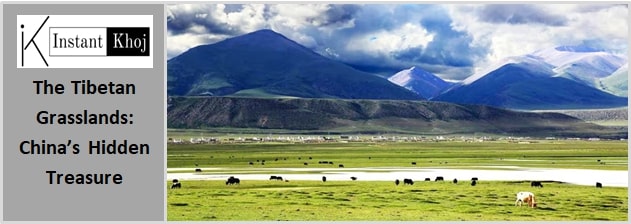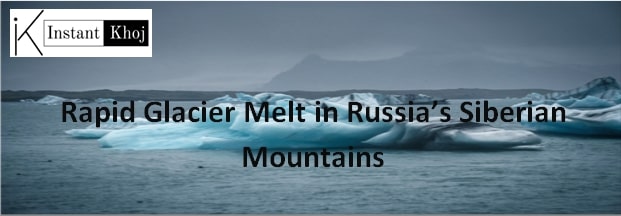The Tibetan Plateau, often referred to as the “Third Pole” of the Earth, is not only the world’s highest and largest plateau but also one of its most ecologically significant regions. Stretching across western China and bordering several Asian countries, the plateau plays a critical role in regional climate regulation, freshwater supply, and biodiversity preservation. At the heart of its ecological fabric are its vast alpine grasslands, which support centuries-old nomadic herding cultures and provide critical habitats for rare and endangered wildlife.
Today, however, these grasslands face mounting pressures. Climate change, overgrazing, and land degradation have threatened both the environmental integrity of the plateau and the livelihoods of the people who depend on it. In response, scientists and policymakers are developing conservation strategies aimed at balancing ecosystem health with traditional pastoral livelihoods—a task that is as complex as it is urgent.
The “Third Pole” of the Earth
The Tibetan Plateau is often called the “Third Pole” because it holds the largest store of frozen freshwater outside the Arctic and Antarctic. Its high-altitude ecosystems—ranging from grasslands and wetlands to glaciers and permafrost zones—are crucial for regulating the Asian monsoon and feeding the continent’s major rivers, including the Yangtze, Mekong, and Brahmaputra.
The plateau’s alpine grasslands cover over 1.5 million square kilometers, making them one of the most extensive grassland systems in the world. These grasslands act as carbon sinks, help maintain permafrost stability, and support a unique array of plant and animal life.
A Home for Nomads and Wildlife
For centuries, Tibetan nomadic herders have sustainably grazed yaks, sheep, and goats across these grasslands, relying on deep knowledge of local weather patterns, seasonal cycles, and pasture rotation. Their traditional lifestyle is finely tuned to the landscape and has historically allowed ecosystems to regenerate naturally.
The region is also home to iconic and endangered species, such as the Tibetan antelope (chiru), wild yak, snow leopard, and black-necked crane. These animals rely on healthy, undisturbed grassland habitats for migration, feeding, and reproduction.
However, with the rise of modern infrastructure, sedentarization policies, and climate instability, both wildlife and pastoral systems are being affected. Overgrazing in some areas has led to grassland degradation, while land fencing and fragmentation have disrupted animal migration routes and the nomadic way of life.
Conservation Challenges and Efforts
Recognizing the importance of the plateau’s ecosystems, Chinese scientists and government agencies have initiated several large-scale grassland restoration and conservation programs. These include:
-
Grazing bans and rotational grazing policies to allow degraded land to recover.
-
Ecological compensation schemes, where herders are financially supported to reduce herd sizes or adopt sustainable practices.
-
Afforestation and re-seeding programs to restore native grasses and prevent desertification.
-
Community-based conservation efforts involving local herders in monitoring wildlife and managing land sustainably.
One notable project is the Sanjiangyuan National Park, established in 2016 in Qinghai Province. Covering the headwaters of three major rivers, this park aims to protect high-altitude ecosystems while allowing controlled grazing and ecotourism. It’s part of a larger vision to build a national park system across China, with the Tibetan Plateau at its ecological core.
The Role of Science and Traditional Knowledge
A key component of successful conservation on the Tibetan Plateau is the integration of modern ecological research with indigenous and local knowledge. Scientists use satellite data, climate modeling, and biodiversity tracking to assess the health of grassland ecosystems. Meanwhile, Tibetan herders bring generations of experience in reading the land, managing herds, and understanding seasonal change.
Collaborative approaches—such as involving herders in wildlife tracking or using local input to shape grazing regulations—are proving more effective than top-down policies alone. These partnerships foster trust, improve outcomes, and help preserve both biodiversity and cultural heritage.
A Delicate Balance
The challenge facing the Tibetan Plateau is how to balance conservation with cultural preservation and economic survival. While reducing grazing pressure can help restore ecosystems, it must be done in a way that respects and supports the livelihoods of herders who have lived in harmony with the land for centuries.
Innovative solutions, including eco-tourism, value-added yak products, and climate-resilient herding strategies, are being explored to provide sustainable income without further harming the environment.
Conclusion
The grassland ecosystems of the Tibetan Plateau are among the most unique and valuable on Earth. They not only regulate climate and support endangered species but also sustain one of the world’s oldest pastoral cultures. As pressures mount from climate change and human activity, conservation has become a pressing priority.
Through thoughtful, inclusive strategies that combine science, traditional knowledge, and policy innovation, there is hope that these alpine grasslands can be protected—ensuring a future where both wildlife and nomadic herders continue to thrive on the “Roof of the World.”




